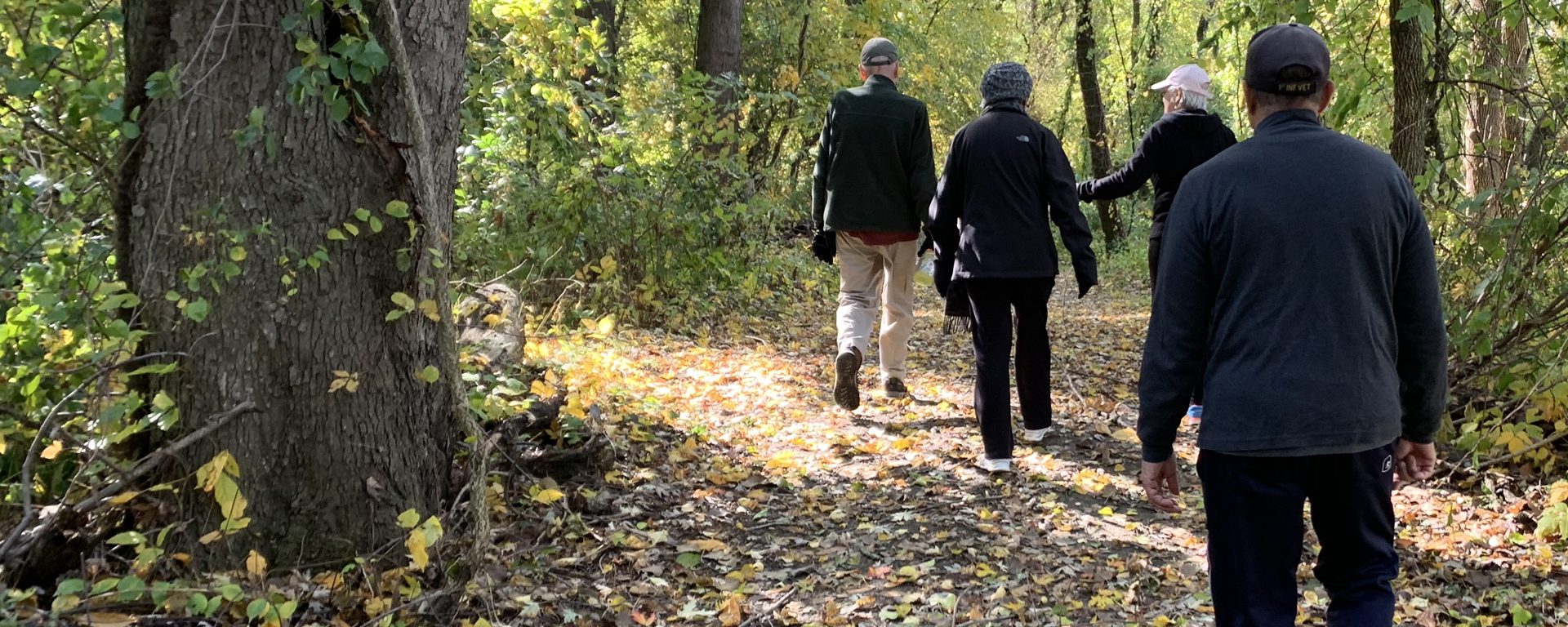Goodwin Increases Access to Connecticut River Floodplains Thanks to AARP Support
by Austin Kenyon, Goodwin College Environmental Studies student
It’s 2019 and the world’s technological advances continue to move at an astounding rate. Today, with more awareness than ever, we face our greatest barrier yet in our advancement: global warming, a phenomenon that results in a slow rise in global temperature. Global warming is caused, in part, by built-up carbon dioxide emissions in the upper atmosphere from the burning of fossil fuels. Potential sources can range from automobiles and smaller machinery like lawnmowers to larger factors like coal power plants, with a list that, unfortunately, goes on and on.
Carbon dioxide emissions can help prevent heat from the sun from radiating back into outer space, causing a slow rise in sea levels from melting ice caps, increasingly unpredictable and harsher weather patterns, and other major consequences.
Thankfully, in more recent years, we have begun to recognize this situation and to put regulations and alternatives in place to help remediate the damage that has been done to our planet from rising global temperatures.
One initiative is being implemented right in Goodwin’s hometown of East Hartford, Connecticut, giving people a closer, more personal look at our environmental history — and future. As part of Connecticut Department of Energy and Environment Protection’s greenways trail program, a 2.5-mile segment of the trail along the scenic Connecticut River flood plain in East Hartford, Wethersfield, and Glastonbury has been constructed, with plans for continued expansion. Eventually it will connect to many other DEEP-implemented greenways trails, creating a convenient foot path throughout the Connecticut River Valley and encouraging more people to walk to their destinations instead of using motor vehicles.
Goodwin recently received two grants that have enriched the experience of those enjoying the trails. AARP Connecticut awarded the College $2,500 through the AARP Livable Communities Grant Program. These funds were used to purchase six educational trail markers, describing the birds, insects, bats, and other animals who call the riverfront their home, as well as providing information about archaeological findings in the area and tips to avoid poison ivy that is found along the trail. A second grant in the amount of $15,500 was awarded to Goodwin through the AARP Community Challenge. This funding allowed for the purchase of four picnic tables, which were installed on a bituminous platform near the river’s edge. This will allow a comfortable picnic and resting area for groups and individuals visiting the trails.
On October 23, 2019, Bruce Morton, program director and associate professor of Environmental Studies at Goodwin College, hosted the first public tour of recently opened the East Hartford segment of the greenways trail. Through his guided tour, participants were able to see the beauty of the Connecticut River front.
The trail begins at the Goodwin College Pavilion, where walkers will notice boxes in the surrounding trees. Morton explained that these serve as homes for bats and encourage them to stay, feeding longer on lingering mosquitoes and helping to keep the insect population under control.
Continuing on to the big steel canopy that serves as a base of operations for Goodwin outdoor lab work, Morton detailed how the structures can withstand Connecticut River flooding. He demonstrated how the main power switch is located on a telephone pole, accessed via a staircase and kept above flooding levels. It was noted that the path that is made of bituminous paving, making it ADA compliant and allowing elderly and physically challenged individuals to enjoy the wonders of the area.
Farther on, the path comes to a crossroads, with one segment leading north toward the Goodwin campus and ending at the border of Pratt & Whitney land and another section going south towards Glastonbury and cutting through an area that is technically a segment of old Wethersfield.
Although the town of Wethersfield lies on the west side of the Connecticut River, this section’s location on the east side is because of a 1600’s hurrican. The hurricane changed the path of the Connecticut River, severing a portion of Wethersfield on the newly expanded east side and creating Keeney Cove. Continuing south, visitors will notice fertile sediment on the paths, brought up as the river floods and recedes.
Along the trails are informational signs with historical and environmental insights as well as benches where visitors can rest and appreciate the River with its more than 55 species of fish, and rising and receding tides — even the invasive flora like Japanese knotweed and Oriental bittersweet vines. Recent attendees greatly enjoyed the experience and expressed a desire for Goodwin to host similar walks in the future. So, drop your keys, put on some walking shoes, and enjoy all the beautiful treasures the Connecticut River has to offer!
To learn more about Goodwin’s Environmental Studies program, visit www.goodwin.edu/majors/environmental-studies or contact Bruce Morton at bmorton@goodwin.edu.
Austin Kenyon is a Goodwin student, currently pursuing a bachelor’s degree in Environmental Studies. Through his career choice, Austin intends to make a real difference in the world and help create a positive future for kids to enjoy.
Goodwin University is a nonprofit institution of higher education and is accredited by the New England Commission of Higher Education (NECHE), formerly known as the New England Association of Schools and Colleges (NEASC). Goodwin University was founded in 1999, with the goal of serving a diverse student population with career-focused degree programs that lead to strong employment outcomes.

